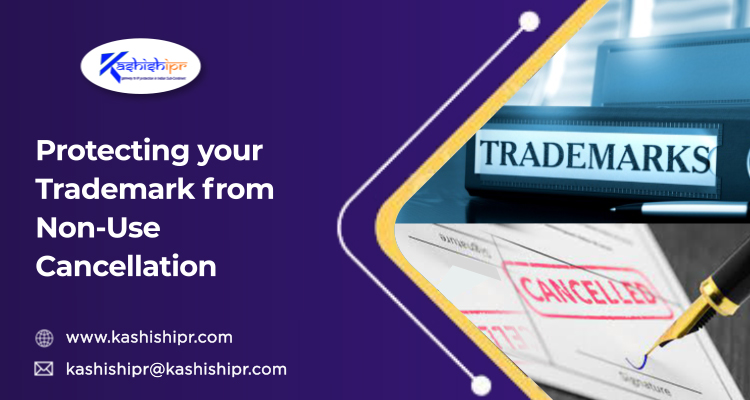
It is becoming increasingly vital that Registered Trademarks are used to maintain their validity and their ability to be enforced against third parties. The removal of any registered trademark from the register of trademarks based on the non-use of the trademark during a specified period concerning the goods or products specified in the Trademark Application is termed as trademark non-use cancellation. Trademark cancellation actions can be filed by third parties and can prove to be extremely time-consuming, costly, and damaging to the brand. So, let us discuss the best way to ensure ‘use’ of your trademark.
Why Does a Trademark Need to be Used?
- Because of the Risk of a Non-Use Cancellation Action – If a trademark is not used within five years (in most countries) of being put on the register or if subsequently it has not been used for five years, then third parties can seek to cancel it on the grounds of non-use.
- So that a Registration Can be Used to Attack a Third Party Application or Registration – If a Trademark Registration is relied upon as a ground for attacking a third party mark opposition or cancellation action and the registration has been on the register for more than five years, then it is almost certain that the party whose mark is being attacked will, if the opposition or cancellation proceeds, ask for proof that the mark has been used in the preceding five years. If this cannot be satisfactorily shown, then the registration concerned will be disregarded in the proceedings concerning the goods/services on which the use cannot be proved unless there is a satisfactory reason for non-use. Such ‘proof of use’ can also be demanded by the proprietor of trademark registration being relied upon as the basis of an infringement action.
- Because of the Risk of Counterattack – In opposition or infringement proceedings, the defendant may counterattack the trademark registration if it is thought it might be vulnerable on the grounds of non-use.
- To Maintain the Registration – In some countries, for example, the United States, it is necessary periodically to prove the use of a registered trademark for maintaining its registration.
What Constitutes Use?
Use needs to be a genuine ‘commercial use’ and not just a token use and also needs to be in the country in which the mark is registered. The amount and frequency of use will depend upon the nature of the goods or services – for example, the sale of two or three cases of tinned food over five years would probably not be considered sufficient, whereas the sale of two or three ships would. For many nations, applying the mark to goods in a given country for export counts as use even if the goods are not put on the market in that country.
How to Prove Use of a Mark?
It is not sufficient to assert that the mark has been used or produce a catalog or a price list showing the mark in question. There needs to be a clear chain of documentation showing the use of the mark concerning the goods or services for which it is registered. For example, an invoice may show a stock code but not indicate the goods or the mark. It may also be necessary to produce a catalog or a data sheet to show what exactly was sold and how the mark was used. It will probably also be necessary to indicate the turnover in the goods or services concerned.
What If it Has Not Been Possible to Use the Trademark?
In some situations, there may be a justifiable reason why the mark couldn’t be used. For example, if the mark is to be used concerning a pharmaceutical product and approval for the pharmaceutical has been sought in good time from the appropriate regulatory authority but has not yet been granted, then it may be accepted as a valid reason for non-use. However, if a product bearing the mark did not sell, then it would not be a valid reason.
Best Practices to Ensure Use of a Trademark
For brands that are concerned about whether their trademark is being used and want to protect it from a non-use cancellation action, the following questions need to be answered:
- Has the registered trademark been genuinely used to at least a reasonable extent in the last few years?
- If so, has it been used on all the goods or services of current and future importance that are in the registration?
- Can the use of the mark be satisfactorily proved?
- Are there any goods or services for which there is a current or future use not covered by the registration?
- Is the form of the mark as registered the form of the mark now being used?
- Is the mark being used by the registered proprietor? If not, then is it being used by someone else (including another company within the group that the registered proprietor is in)? Or should there be a license in place?
- Is the mark used or might be used in the future in country/countries where it is not yet being registered? ✅ For more visit: https://www.kashishipr.com/
No comments:
Post a Comment